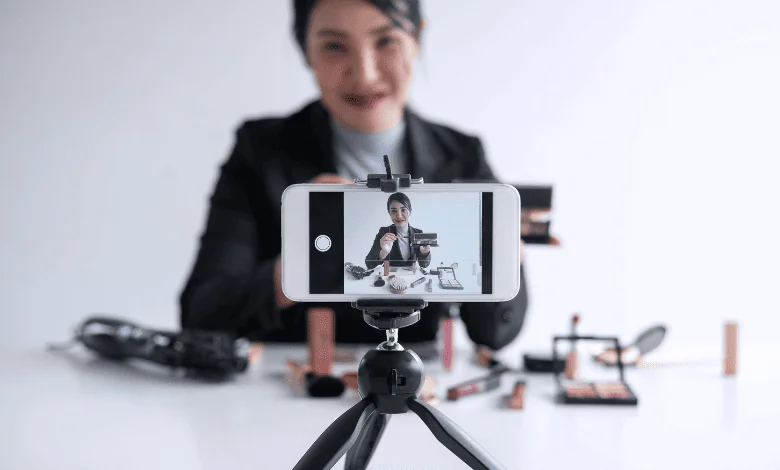How Social Media Impacts Cosmetic Procedures

In today’s digital age, social media has become an integral part of our lives, shaping our perceptions, influencing our decisions, and connecting us with others around the globe. One area where the influence of social media is particularly pronounced is in the realm of cosmetic procedures. From Instagram to TikTok, platforms abound with images of flawless faces, sculpted bodies, and the promise of transformation through cosmetic enhancements. In this article, we delve into the complex interplay between social media and cosmetic procedures, exploring how these digital platforms shape beauty standards, influence patient expectations, and impact the practice of cosmetic surgery.
Social Media and Beauty Standards:
The rise of social media has ushered in a new era of beauty standards characterized by flawless filters, perfectly contoured faces, and sculpted bodies. Platforms like Instagram and Snapchat are inundated with images of influencers and celebrities showcasing their seemingly flawless appearances, setting unrealistic standards for beauty and perfection. As users scroll through their feeds, they are bombarded with images of idealized beauty, leading to feelings of inadequacy and a desire for cosmetic enhancement, including rhinoplasty.
Social Media as a Source of Information:
Despite the proliferation of idealized images, social media also serves as a valuable source of information and education about cosmetic procedures. Platforms like YouTube and TikTok are filled with tutorials, testimonials, and before-and-after photos, providing users with insights into various treatments and their outcomes. While this wealth of information can empower individuals to make informed decisions about cosmetic procedures, it also poses risks, as unverified information and misleading content can fuel unrealistic expectations and misconceptions.
Social Media and Patient Expectations:
One of the most significant impacts of social media on cosmetic procedures is its influence on patient expectations. Filtered images, photo editing, and digital manipulation create an unrealistic standard of beauty that many individuals strive to achieve. As a result, patients may come to consultations with unrealistic expectations, seeking to emulate the flawless appearances they see on social media. This can pose challenges for cosmetic surgeons, who must manage patient expectations and promote realistic outcomes, particularly in procedures like rhinoplasty, where patient satisfaction relies heavily on the surgeon’s ability to manage expectations.
Social Media Marketing and Cosmetic Procedures:
In addition to shaping patient expectations, social media plays a pivotal role in marketing cosmetic procedures and aesthetic services. Cosmetic surgeons and med spas leverage platforms like Instagram and Facebook to showcase their work, attract new patients, and promote special offers. Influencer partnerships, sponsored content, and targeted advertising campaigns are common strategies used to reach a broader audience and generate leads. However, ethical considerations and regulatory challenges surrounding social media marketing in the cosmetic surgery industry underscore the need for transparency, authenticity, and responsible practices.
Also Read: 6 Minor & Common Side-Effects of Cosmetic Surgery
Social Media and Patient Safety:
Social media’s impact on cosmetic procedures extends beyond aesthetics to patient safety. Platforms like Instagram and Snapchat often promote unrealistic beauty ideals, fueling trends like “Snapchat dysmorphia,” where individuals seek cosmetic enhancements to resemble filtered images. Moreover, the popularity of social media has led to the proliferation of unregulated cosmetic treatments, posing risks such as infection and disfigurement. To address these concerns, patients must exercise caution when considering procedures advertised on social media, opting for reputable practitioners and thorough research. Additionally, healthcare professionals and regulatory bodies must remain vigilant in monitoring and regulating the industry to uphold safety standards.
Social Media and Patient Communication:
The advent of social media has also transformed patient communication and consultation processes in cosmetic surgery practices. Platforms like WhatsApp and Messenger allow for real-time communication between patients and providers, facilitating inquiries, scheduling appointments, and addressing concerns. Virtual consultations via Zoom or FaceTime have become increasingly popular, offering convenience and accessibility for patients seeking cosmetic procedures, including rhinoplasty. However, effective communication and patient-provider relationships remain paramount, as clear and transparent communication is essential for ensuring patient satisfaction and safety.
Social Media and Professional Ethics:
As social media shapes cosmetic procedures, ethical considerations come to the forefront. Cosmetic surgeons face challenges in maintaining patient confidentiality and promoting realistic expectations. They must prioritize patient education, provide transparent information about procedures, and uphold professional boundaries in social media interactions. Moreover, practitioners must ensure that representations of outcomes accurately reflect potential risks. By promoting transparency and patient-centered care, professionals can use social media to enhance engagement while upholding ethical standards and patient welfare.
Social Media and Psychological Impacts:
Beyond its influence on patient expectations and marketing practices, social media also has profound psychological effects on individuals considering or undergoing cosmetic procedures. Exposure to idealized beauty standards on social media can exacerbate body image concerns, fueling feelings of inadequacy, low self-esteem, and poor body image. Research suggests that excessive use of social media may contribute to negative mental health outcomes, including anxiety, depression, and body dysmorphic disorder. As such, it is crucial for patients to approach social media with caution, seeking support, counseling, and mental health resources when needed.
Conclusion:
The impact of social media on cosmetic procedures is undeniable, shaping beauty standards, influencing patient expectations, and transforming the practice of cosmetic surgery, including procedures like rhinoplasty. While social media offers valuable information and opportunities for connection, it also presents challenges, including unrealistic beauty ideals, marketing pressures, and psychological impacts. As we navigate the digital landscape of social media, it is essential to approach it with mindfulness, critical thinking, and self-awareness. By promoting responsible use, ethical practices, and informed decision-making, we can harness the power of social media to enhance our lives and well-being, both online and offline.
Pat Baker is a social media novice, a beauty lover, and a writer for rhinoplasty specialists in the Tampa area.






